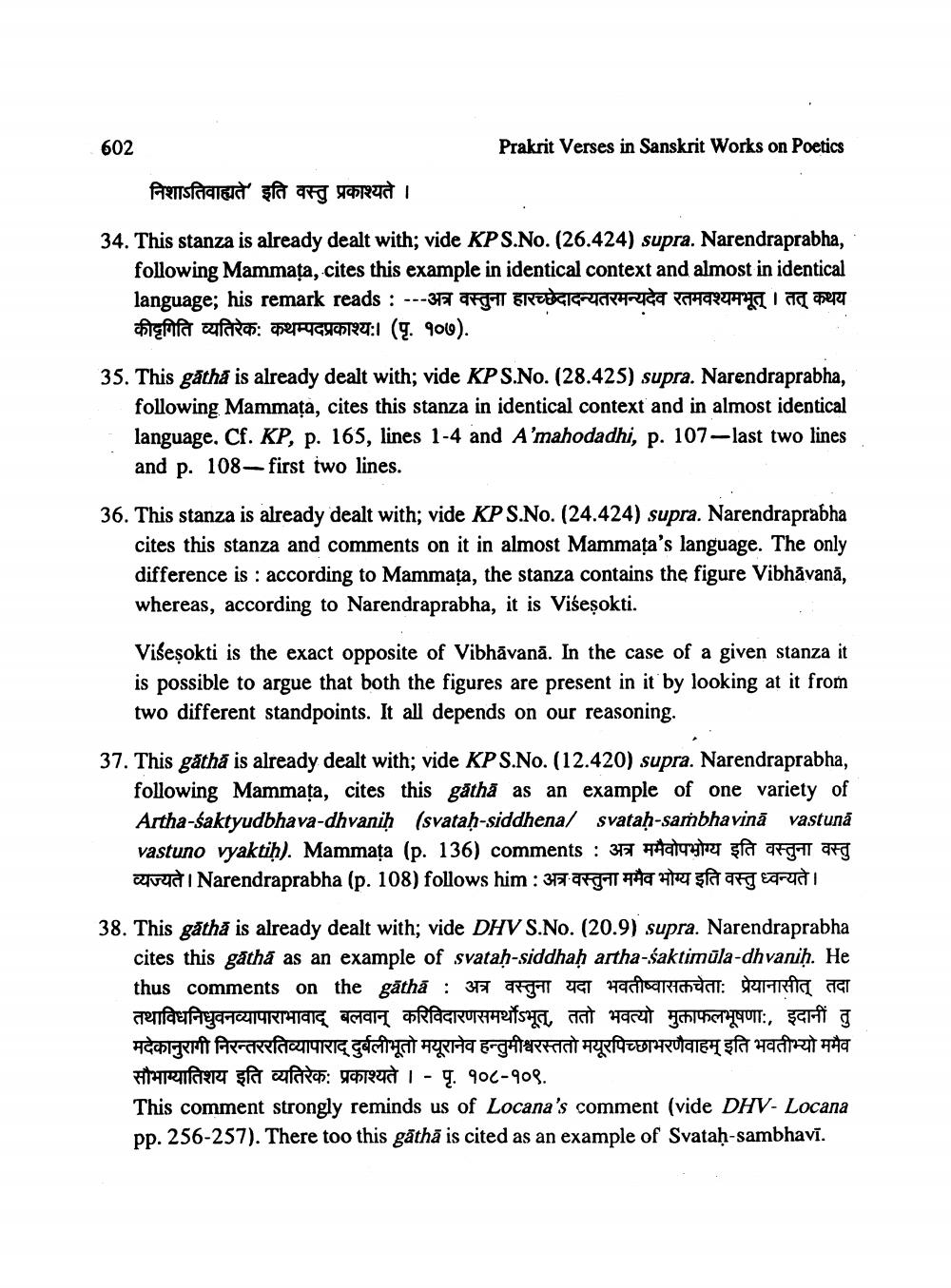________________
602
Prakrit Verses in Sanskrit Works on Poetics निशाऽतिवाह्यते' इति वस्तु प्रकाश्यते । 34. This stanza is already dealt with; vide KPS.No. (26.424) supra. Narendraprabha,
following Mammata, cites this example in identical context and almost in identical language; his remark reads : ---3 AT EROOGIGARRI Garut i na pery Asta da BRYG4C124:1 (g. 900).
35. This gåtha is already dealt with; vide KP S.No. (28.425) supra. Narendraprabha,
following Mammața, cites this stanza in identical context and in almost identical language. Cf. KP, p. 165, lines 1-4 and A'mahodadhi, p. 107-last two lines and p. 108—first two lines.
36. This stanza is already dealt with; vide KP S.No. (24.424) supra. Narendraprabha
cites this stanza and comments on it in almost Mammata's language. The only difference is : according to Mammata, the stanza contains the figure Vibhāvanā, whereas, according to Narendraprabha, it is Višeşokti.
Višeşokti is the exact opposite of Vibhāvanā. In the case of a given stanza it is possible to argue that both the figures are present in it by looking at it from two different standpoints. It all depends on our reasoning.
37. This gåtha is already dealt with; vide KP S.No. (12.420) supra. Narendraprabha,
following Mammața, cites this gātha as an example of one variety of Artha-śaktyudbhava-dhvanih (svataḥ-siddhena/ svataḥ-sambhavinā vastuna vastuno vyaktih). Mammața (p. 136) comments: 37 Halgryte şta argit org avud i Narendraprabha (p. 108) follows him : 371 raat te gaar erudi
38. This gåtha is already dealt with; vide DHV S.No. (20.9) supra. Narendraprabha
cites this gatha as an example of svatah-siddhaḥ artha-Śaktimula-dhvanih. He thus comments on the gathā: 34
UGT Carica: Fra G तथाविधनिधुवनव्यापाराभावाद् बलवान् करिविदारणसमर्थोऽभूत्, ततो भवत्यो मुक्ताफलभूषणा:, इदानीं तु मदेकानुरागी निरन्तररतिव्यापाराद् दुर्बलीभूतो मयूरानेव हन्तुमीश्वरस्ततो मयूरपिच्छाभरणैवाहम् इति भवतीभ्यो ममैव with referere şta olados: Trud I - Ç. 900-90%. This comment strongly reminds us of Locana's comment (vide DHV- Locana pp. 256-257). There too this gathā is cited as an example of Svataḥ-sambhavī.




